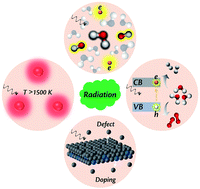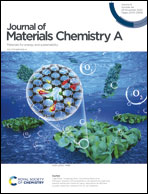Recent advances in green synthesis and modification of inorganic nanomaterials by ionizing and non-ionizing radiation
Abstract
Alternative to conventional Joule heating, radiation in the forms of electromagnetic waves and particle beams offers a promising route to energize the green synthesis and modification of nanomaterials with high time efficiency, simplicity, scalability, and environmental friendliness. Fundamental interactions between the atoms/molecules and the photons/high-velocity particles lead to several radiation effects that pave the way for chemical reactions and physical processes. Here, a comprehensive review is provided to summarize numerous studies concerning radiation-induced synthesis and modification of metals, metal compounds and carbon materials. We cover both ionizing and non-ionizing radiation of the full spectrum of electromagnetic waves and subatomic particle beams. The former includes γ- and X-rays, electron beams, neutron beams, and other high-energy particle beams, while the latter consists of ultraviolet, visible light, infrared, and microwave radiation. Depending on the energy and intensity of the radiation source, we formulate distinct radiolysis, photolysis, knock-on, and photothermal effects that mediate the synthesis and modification. Emphasis is placed on the on-demand utilization of radiation and the fine control of structural parameters (size, composition and dispersity) of resulting materials. Lastly, we propose improvements for the novel design and implementation of radiation techniques to synthesize and modify advanced inorganic nanomaterials.



 Please wait while we load your content...
Please wait while we load your content...